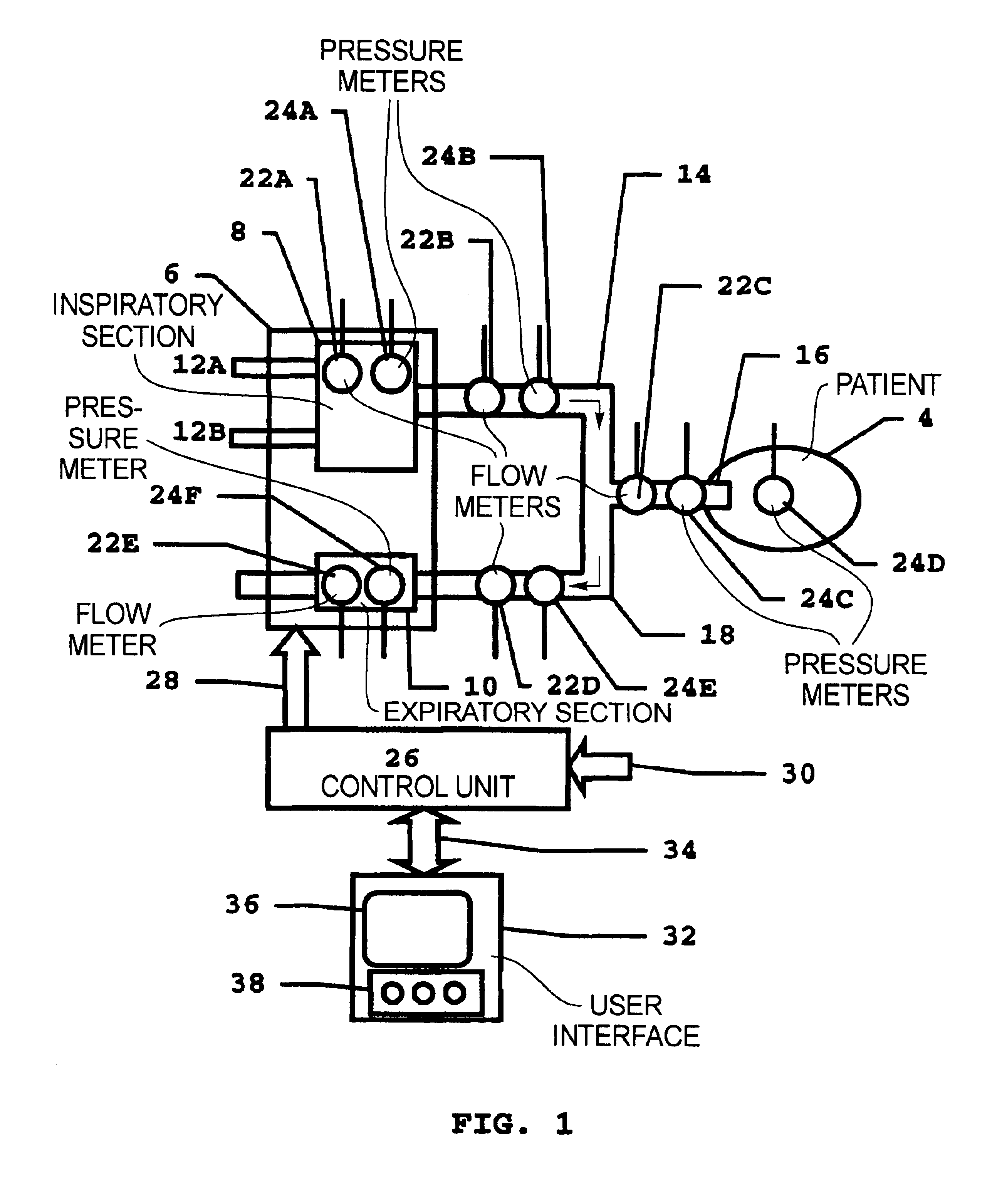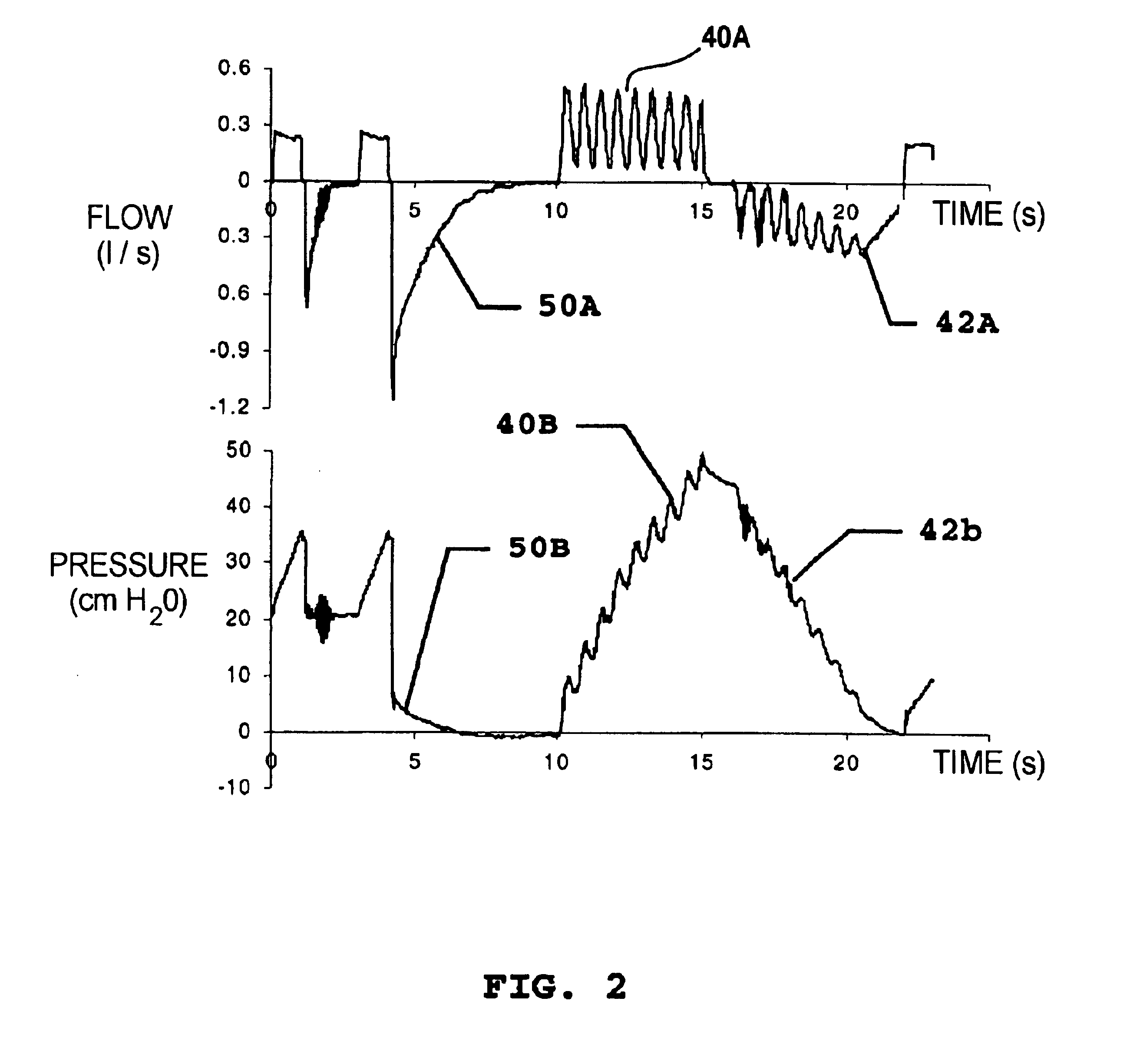Breathing apparatus and method for operation thereof for examining pulmonary mechanics of a respiratory system
a technology of pulmonary mechanics and breathing apparatus, which is applied in the direction of valve operating means/release devices, applications, diagnostic recording/measuring, etc., can solve the problems of difficult interpretation, high risk of respirator-induced lung damage (rils), and difficult time-consuming recording of curves
- Summary
- Abstract
- Description
- Claims
- Application Information
AI Technical Summary
Benefits of technology
Problems solved by technology
Method used
Image
Examples
Embodiment Construction
No. of loops: =5
Starting values for pressure: =20, Step: -5 cmH20
No. of normal breaths between each loop: 6
Duration of preceding expiration: 6 s
End values for pressure, not selected, safety level: 50 cmH20
Volume range for loops: 1400 ml
Insufflation duration: 6 s
Exsufflation duration: 6 s
Sinusoidal modulation: 1.66 Hz Modulation depth: 100%
Time for measurement: At a manual command
Is the above correct, Yes / no? Yes
Answers entered by the operator during the dialogue in the above example are in italics.
The measurement sequence starts at a pre-selected time or after a manual command. According to the above dialog, the sequence has five loops, the first of which starts at a pressure of 20 cmH20, with subsequent loops at successively lower pressures.
The measurement sequence starts when the computer sends analog signals to the respirator for control of the respirator's rate and end-expiratory pressure (PEEP). The signals controlling frequency and PEEP have the levels required for subsequent ...
PUM
 Login to View More
Login to View More Abstract
Description
Claims
Application Information
 Login to View More
Login to View More - R&D
- Intellectual Property
- Life Sciences
- Materials
- Tech Scout
- Unparalleled Data Quality
- Higher Quality Content
- 60% Fewer Hallucinations
Browse by: Latest US Patents, China's latest patents, Technical Efficacy Thesaurus, Application Domain, Technology Topic, Popular Technical Reports.
© 2025 PatSnap. All rights reserved.Legal|Privacy policy|Modern Slavery Act Transparency Statement|Sitemap|About US| Contact US: help@patsnap.com



